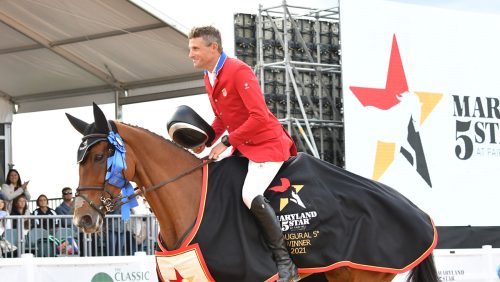When we began publishing American Horses In Sport, in 1987, it’s purpose was to support domestic horse breeding by providing a centralized format for performance results. At the time, owners, trainers and breeders had no reliable way of determining whether a stallion had produced offspring that could jump, gallop or piaffe.
Well, we’re still a long way from conclusively linking sport horse performance with pedigree, but the information technology revolution that’s happened since then is helping, and this issue of American Horses In Sport contains a small step toward reporting more about that relationship than we ever have before. It’s a result of work by the leaders and staff of the U.S. Equestrian Federation, by leaders and staff of other national organizations and breed registries, and of an increasing awareness’really dissatisfaction’by many horsemen that the tremendous breeding resources available here are being ignored as Americans fly to Europe or New Zealand to buy horses.
But we aren’t the only country crying over the fact that their own horses aren’t representing their county or winning their biggest events. The February issue of England’s Eventing magazine worries that the British-bred event horses’once the pinnacle of the sport’might be “dead as a Dodo.” They note that no British-bred horse has won the Badminton CCI**** since 1996, and the percentage of British-bred horses in their flagship event has decreased from 64 percent in 1995 to 32 percent in 2003. They’ve been replaced by Irish-, New Zealand- and French-bred horses. And when did you last see a British-bred dressage horse or show jumper on one of their teams?
One of the big differences between Thoroughbred breeding and sport horse breeding is information. The Jockey Club and some pedigree-research companies can give you tremendously detailed analysis of the pedigree of every Thoroughbred stallion in the world, alive or dead, and the racing record of every one of his get, with the click of a mouse or a phone call. But, until now, you couldn’t get much detail on any sport horse stallion, or his get’at least, not easily. But, thanks to the staff at the USEF, in particular Cheryll Frank, we’re publishing in this issue an actual ranking of stallions, for 2003, in hunters, jumpers, dressage and eventing, based on the points or money their get earned in competition (see pp. 102, 140, 157 and 174). Next year, we plan to expand these rankings, which we know will only become more complete in the future, into their own section.
Every U.S. breeder dreams of producing a Touch Of Class, a Rox Dene, a Keen or a Molokai. But international stars are rare jewels, jewels that usually can’t be replicated. The numbers’in terms of buyers and income’are in the sort of mid-level horses, the amateur-owner jumpers, the junior or green hunters, the dressage horses at second level to Intermediaire I, and the event horses up to intermediate. These horses need to be above average in movement or scope and well above average in desire and generosity. Their riders usually lack the experience or inclination to deal with a superstar’s personality and athleticism, and it’s these riders who, like the pros, insist that it’s easier to find suitable mounts abroad.
Going abroad may seem logistically easier, but if you look at the complete sire rankings on the USEF website, you’ll see that there really are U.S.-standing stallions (particularly in dressage) who have sired numerous useful to exceptional mid-level stars. Yes, those horses really are here, waiting to be “found.” Now breeders just have to solve the age-old problem of convincing people to try them.















